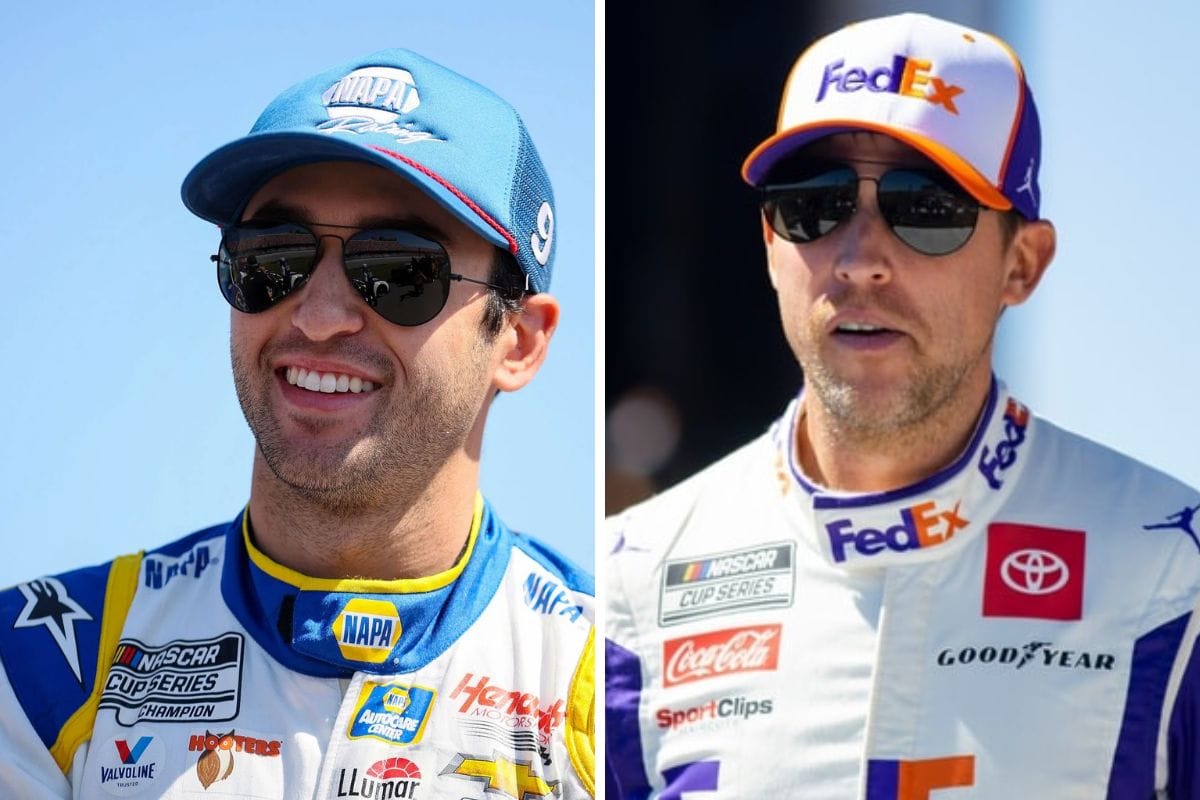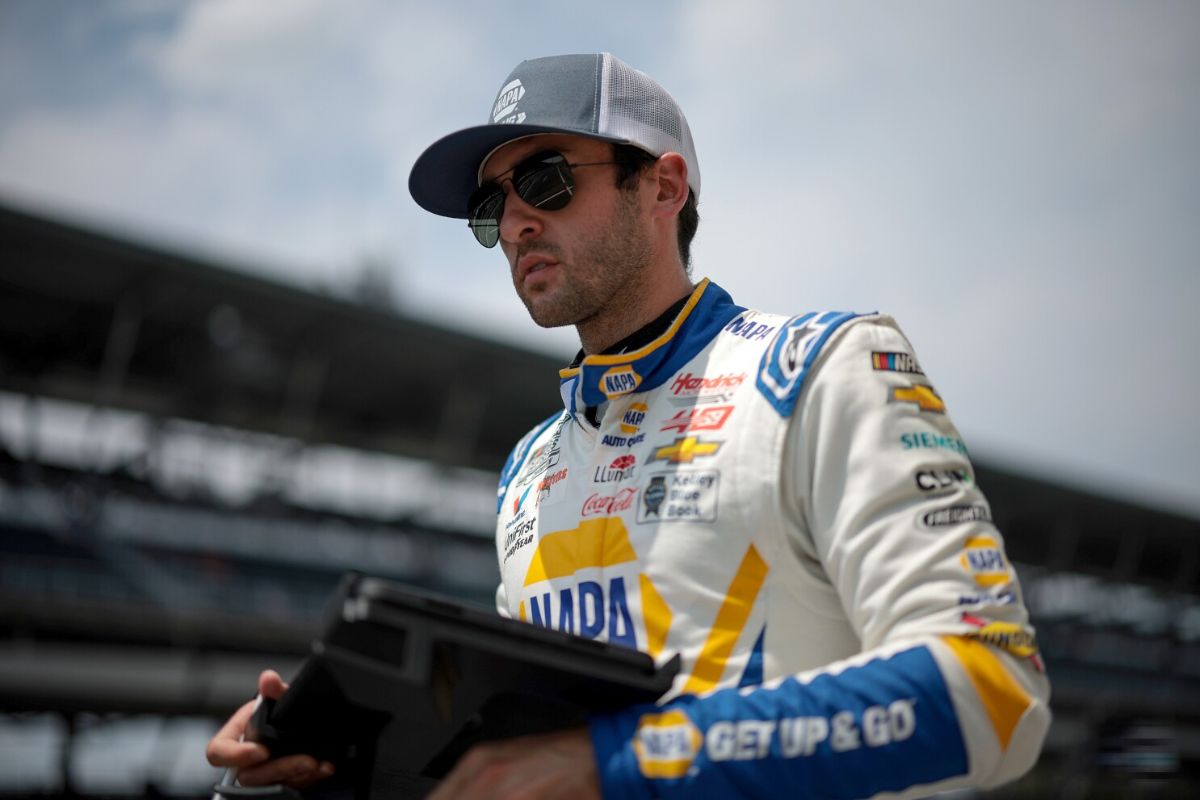Chase Elliott Fan Challenges Denny Hamlin to a Face-Off: The escalating rivalry between Chase Elliott and Denny Hamlin, rooted in the contentious 2017 Martinsville incident, has transformed from a mere competitive edge to a broader cultural phenomenon within NASCAR. A challenge issued by an ardent Elliott supporter to Hamlin highlights the passionate fan engagement that often influences the narrative of the sport. This intersection of rivalry and fandom raises critical questions about the implications of such confrontations, both on and off the track, in addition to the role of social media in shaping public perception and driver dynamics. What might this bold standoff mean for the future of their competition?
Key Highlights
- The rivalry between Chase Elliott and Denny Hamlin intensified after the 2017 Martinsville incident, marking a significant moment in NASCAR history.
- A fan attempted to confront Hamlin post-race, highlighting the emotional investment and tensions within Elliott’s fanbase.
- Social media plays a crucial role in amplifying fan challenges and sentiments, influencing perceptions of the rivalry.
- Elliott’s approach to racing, as reflected in his comments, emphasizes adaptability based on rivals’ actions, potentially reshaping future rivalry dynamics.
The 2017 Martinsville Incident
The 2017 Martinsville incident marked a pivotal moment in the rivalry between Chase Elliott and Denny Hamlin, summarizing the intense emotions and notable stakes that define NASCAR’s competitive landscape. As the playoff race unfolded, both drivers were not merely competing for position but were also battling for their legacies within the sport.
The on-track confrontation encapsulated the raw passion that NASCAR elicits, particularly among its fanbase, highlighting how individual drivers become symbols of loyalty and pride for their supporters. This incident intensified the rivalry, revealing the underlying tensions that come with racing.
Elliott, then piloting the No. 24 Chevrolet for Hendrick Motorsports, represented a new generation of drivers, while Hamlin, a seasoned competitor, embodied the experience and tenacity of established athletes in the sport. The emotional fallout from the incident was palpable, particularly among Elliott’s fanbase, as evidenced by the fervor exhibited by a fan who confronted Hamlin in the pits, seeking to defend his driver’s honor.
This moment emphasized not only the personal stakes involved for the drivers but also the communal spirit among fans, which can often manifest in visceral reactions. Analyzing this rivalry, one recognizes that it transcends mere competition; it embodies the intricate interplay of passion, legacy, and the psychological dimensions of sportsmanship.
The Martinsville Incident Details
In the climactic moments of the Initial Data 500, a critical collision between Denny Hamlin and Chase Elliott not only altered the race’s outcome but also reignited the fervor of their ongoing rivalry, leaving a lasting impression on both the drivers and their passionate fanbases.
The incident, which transpired in the closing laps at Martinsville, was representative of the fierce competitiveness that defines NASCAR, showcasing how split-second decisions can have profound consequences.
Hamlin’s action to bump Elliott’s No. 24 Chevy resulted in a spin, sending him crashing into the wall. This unfortunate turn of events abruptly ended what had been a promising race for Elliott, who had been performing well up to that point.
The palpable tension following this collision was further amplified by the reaction from the stands, where fans voiced their displeasure at Hamlin’s aggressive tactics.
Key aspects of the incident include:
- Timing: Occurred during the critical closing laps, heightening the stakes.
- Impact: Caused an early exit for Elliott, disrupting his playoff aspirations.
- Emotional Response: Fans expressed outrage over Hamlin’s actions, showcasing the emotional investment in the rivalry.
Fan Reaction and Police Intervention
Amidst the charged atmosphere following the incident at Martinsville, fan reactions escalated to a point where tensions spilled over, necessitating police intervention to maintain order in the pit area. The fervor exhibited by a particularly Chase Elliott supporter emphasized the intense emotions that often accompany racing rivalries. As the fan attempted to confront Denny Hamlin, the situation threatened to devolve into chaos, illustrating how deeply passionate allegiances in motorsport can provoke impulsive behavior.
The intervention of one of Hamlin’s crew members was critical in preventing a physical confrontation, highlighting the volatile nature of fan loyalty and the sometimes blurred lines between admiration and aggression. Ultimately, police escorted the fan away from the scene, a clear reminder of the responsibilities that accompany the fervor of fan engagement.
A Chase Elliott fan wants to fight Denny Hamlin. pic.twitter.com/kcGgfL6NNd
— Matt Weaver (@MattWeaverRA) October 29, 2017
The need for police presence at such events raises questions about fan culture in motorsport. While enthusiasm is a crucial component of the sport’s identity, incidents like this emphasize the importance of promoting respectable behavior among fans.
As the NASCAR community reflects on this episode, it must consider how to cultivate an atmosphere that celebrates rivalry without crossing the line into hostility, ensuring that the spirit of competition remains a source of enjoyment rather than a catalyst for conflict.
Elliott’s Response at Phoenix
Chase Elliott’s post-race comments at Phoenix revealed a thoughtful yet assertive approach to his racing philosophy, suggesting that he will respond to competitors based on their on-track behavior. When asked about a recent incident and potential retaliation stemming from the Martinsville race, Elliott’s declaration that “I’m gonna race guys how they race me” highlights his commitment to a competitive ethos rooted in mutual respect—or the lack thereof.
"I'm gonna race guys how they race me."
After Denny Hamlin sent Chase Elliott spinning at Martinsville in 2017, Elliott returned the favor at Phoenix two weeks later. #NASCAR pic.twitter.com/yq2aLmiRKp
— NASCAR on NBC (@NASCARonNBC) November 5, 2021
This mindset reflects Elliott’s character and sets a tone for future interactions on the track. His response implies a tactical adaptability, where he assesses the actions of his rivals and calibrates his own racing style accordingly. This notion of reciprocity in racing can influence the dynamics of competition in meaningful ways.
- Competitive Context: Elliott’s remarks are positioned within a broader narrative of rivalry, particularly with Denny Hamlin.
- Philosophical Undertones: The notion of ‘racing how one is raced’ speaks to the ethics of competition.
- Tactical Implications: Such a philosophy may lead to heightened tension and excitement in upcoming races.
Post-Race Comments and Finishing Positions
The aftermath of the race illuminated not only the contentious exchange between Elliott and Hamlin but also the striking contrast in their finishing positions, further intensifying the narrative surrounding their rivalry.
Chase Elliott’s frustration was palpable as he faced a disappointing P27 finish, ultimately stemming from a spin-out instigated by Hamlin during a critical moment in the race. This incident served as a catalyst for a heated exchange between the two drivers, exemplified by Elliott’s aggressive door slam on Hamlin during the cooldown lap.
In the post-race interview, Elliott articulated his discontent, noting Hamlin’s claim of being pushed, which Elliott dismissed as disingenuous due to the distance between Hamlin and the next competitor. His reference to his mother’s adage emphasizes a sense of disillusionment with Hamlin, revealing not just the rivalry’s personal stakes but also highlighting a broader theme of accountability in competitive sports.
“He came over and talked to me on the back straightaway and funny thing was, he said somebody was pushing him, but there were two car lengths between him and the next guy. My mom always said ‘You don’t have anything nice to say, don’t say anything at all,’ so he’s not even worth my time. We’re gonna go on to Texas.” – Elliott
Conversely, Hamlin’s P7 finish positioned him as a contender, effectively casting him in a more favorable light in the aftermath of the race. This divergence in performance not only highlights the competitive nature of NASCAR but also emphasizes the psychological warfare that often accompanies such rivalries.

The disparity in their results will certainly fuel further speculation and scrutiny in the weeks to come, as fans and analysts similarly watch the evolving dynamics between these two drivers. Ultimately, this incident serves as a reminder of the fine line between rivalry and respect in the high-stakes world of motorsport.
News in Brief: Chase Elliott Fan Challenges Denny Hamlin to a Face-Off
The rivalry between Chase Elliott and Denny Hamlin exemplifies the intense emotions inherent in NASCAR.
The 2017 Martinsville incident serves as a crucial moment, igniting passionate fan responses and highlighting the sport’s volatility.
Social media’s role in amplifying these rivalries further complicates the dynamics of competition and respect among drivers.
As this narrative unfolds, the implications for both drivers and their fanbases resonate beyond the racetrack, shaping the future landscape of NASCAR rivalries.
ALSO READ: Chase Elliott’s 2020 Championship: Fans Debate Its True Merit




